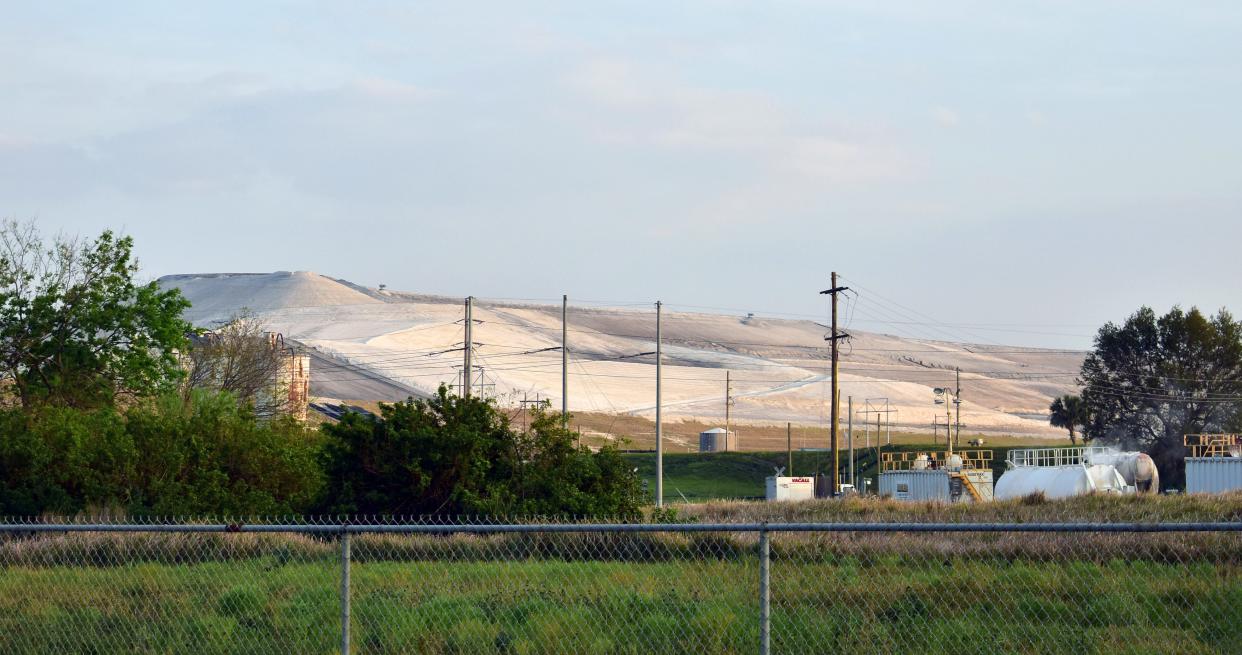Environmental groups to sue EPA: Advocates seek fertilizer mining oversight

Advocacy groups are pressuring the Environmental Protection Agency to strengthen regulations over the fertilizer production industry with a new lawsuit that seeks action from the federal agency.
A group of 11 environmental advocacy groups notified the EPA they intend to file a lawsuit against the agency that seeks a response to a rulemaking petition for stronger regulation of hazardous waste created by phosphate mining companies in the process of producing fertilizer.
The issue stems back to February 2021, when 17 organizations filed the rulemaking petition asking the EPA to regulate phosphogypsum and wastewater created in the process of making fertilizer under the Resource Conservation and Recovery Act. The waste is exempt from hazardous waste regulations because of a 1991 decision that exempted phosphoric acid production waste from federal hazardous waste regulations.
From the archive: Environmentalists concerned about proposed phosphate mine in DeSoto County
Update: Plans for Mosaic mine in DeSoto County delayed by at least 2 years
Just weeks after the petition was filed, an emergency ensued at the former Piney Point fertilizer plant in Manatee County that forced state officials to authorize the emergency discharge of about 215 million gallons of wastewater from the facility into Tampa Bay.
Three years later, the EPA has not responded to the environmental organizations.
"This action is simply asking for a response to that petition," said Ragan Whitlock, a staff attorney with the Center for Biological Diversity. "The EPA has been sitting on its hands for the last three years and has failed to respond to us. My guess is because this is a tricky ask, and it's going to be able to justify a 'no' if they are wanting to issue one."
"They either need to state on the record that yes we agree we made a mistake, or to justify on the record why it's going to continue to cater to the phosphate industry," he said.
Whitlock said the Piney Point incident is not alone. There was another breach at Piney Point in 2011, also forcing the disposal of 170 million gallons of wastewater into Gulf waters during that incident. About 215 million gallons of wastewater also got drained down a massive sinkhole in 2016 at a facility owned by The Mosaic Company in Mulberry.
"It's something we have all seen firsthand," he said. "The Piney Point disaster was monstrous. It affected tourism. It affected endangered species. It was one of the worst instances of environmental contamination that I've ever seen, and the EPA did nothing in the wake of that disaster."
Manatsota-88 Chairman Glen Compton said the lack of oversight has opened the door to alternative low-cost proposals for ways to dispose of fertilizer industry waste, such as use in road beds, agriculture, and as landfill cover.
"The phosphate companies have for decades tried to come up with an alternative way to dispose of their waste product instead of putting it into a gypsum stack," Compton said. "What we're seeing are proposals to not contain a waste product, but spread it around so there is less oversight and less regulation."
"We are simply asking the EPA to do their job, which is to protect the public's health and the environment from hazardous toxic waste material," Glenn Compton said. "They have been derelict in doing so for decades."
The lawsuit was filed by organizations located across the nation, but Whitlock said Southwest Florida receives a disproportionate amount of impact because of the presence of fertilizer industry giant the Mosaic Company.
"We have more than a billion tons of phosphogypsum stored in stack systems across Florida alone, with more than 30 million tons created in our state every single year. The Bone Valley of central and southwest Florida contains a lot of phosphate ore underground, and it is clearly the intention of Mosaic and others is to continue mining it."
"Mosaic is a Fortune 500 company who reported a net revenue of $3.6 billion in 2022," he said. "It's our position that the company can stand to take a financial haircut in order to be better stewards of our environment."
This article originally appeared on Sarasota Herald-Tribune: Environmental groups to sue EPA: Seek fertilizer mining oversight

